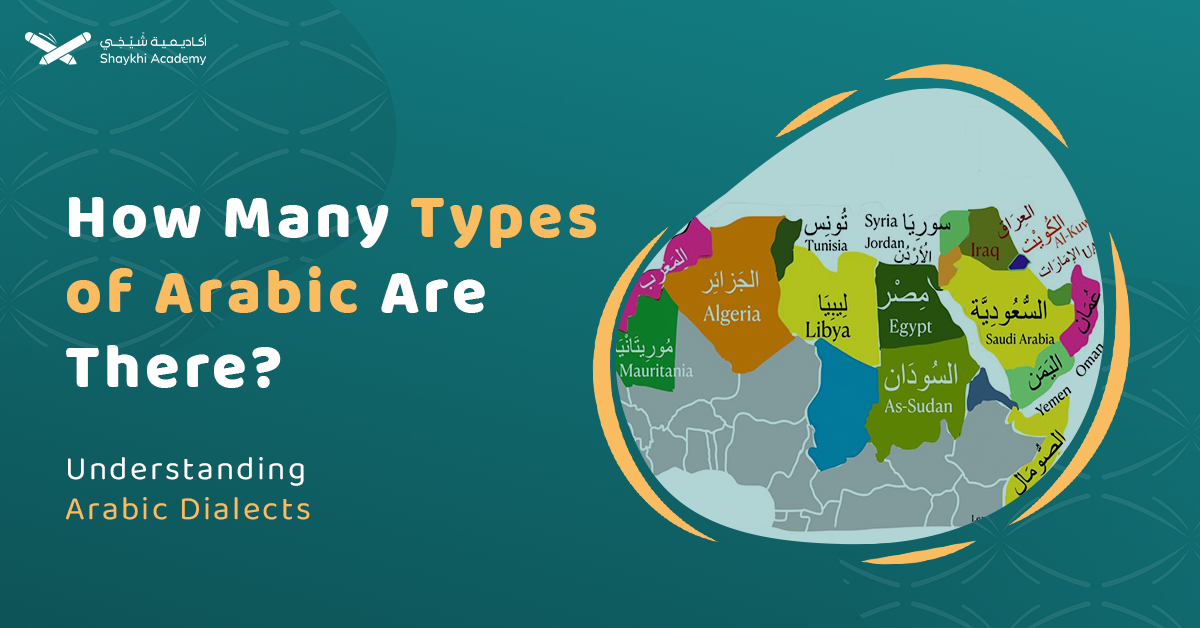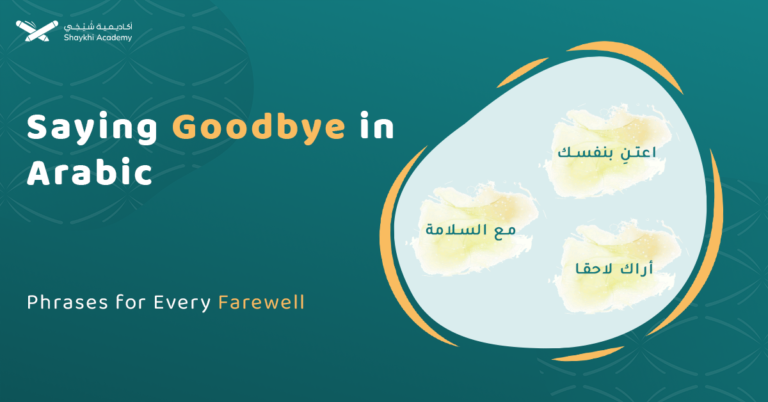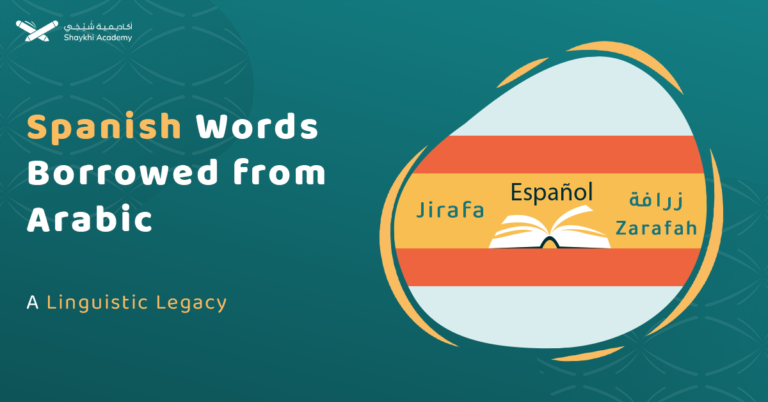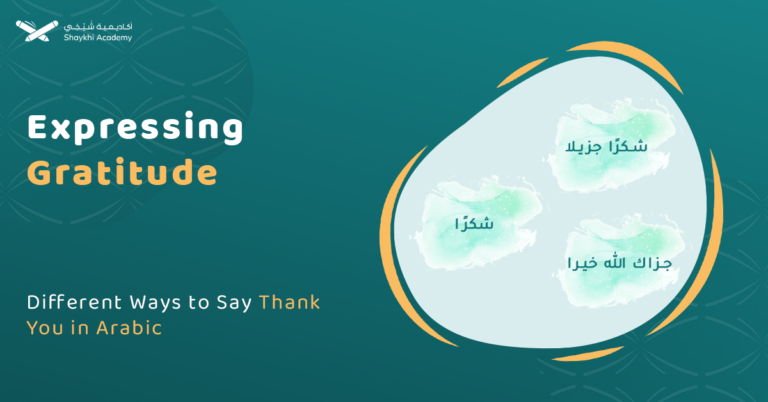If you want to learn Arabic, the next question is usually, “How many types of Arabic are there, and what type do you want to learn?”. Knowing the Arabic types shows you the richness of the language. You will recognize why this language was chosen by Allah in the holy Quran.
When you decide on your learning goals, you can easily choose the type of Arabic you will need to learn. In this topic, we will explore the types of Arabic languages and the specific purposes each serves.
How Many Types Of Arabic Are There?
Arabic is a rich, multifaceted language with three main types: Classical Arabic, Modern Standard Arabic (MSA), and Colloquial Arabic. Classical Arabic is rooted in the Quran, MSA is widely used in media and formal settings, and Colloquial Arabic includes over 30 regional dialects. Each type reflects the language’s rich history and offers unique pathways depending on whether you’re interested in religion, formal communication, or casual conversation.
Types of Arabic Languages
More than 550 million people worldwide speak Arabic, about 300 million of whom speak it as their mother tongue, and the rest use it as a second language. Thanks to the Quran, The Arabic language went through several stages in collecting the rules of grammar and diacritics, in addition to the principles of language and rhetoric, Although the Quran kept Arabic as the original language, many dialects have evolved in Arab daily life.
There are 3 types of Arabic. These types show Arabic adaptability to various uses and contexts.
1. Classic Arabic “Quranic Arabic”:
This type of Arabic is based on the Quranic text which is considered the oldest Arabic book. It is characterized by a unique writing style and a unique recitation way. Generally, it is very similar to Modern Standard Arabic, but it has classical vocabulary, grammatical structures, and rhetorical features. Learning this type of Arabic is important for people who are interested in Islamic research or who want to learn more about worship in Islam. If you want to deepen your knowledge about this type of Arabic, you can take our Arabic Quranic course.
2. Modern Standard Arabic “MSA” or Fusha:
Modern Standard Arabic is the type of Arabic that is easily understood by all Arabs in any country regardless of their specific dialect. It is widely used in all written materials of media such as newspapers and books. It is also used in official educational institutions and government correspondence. It focuses on the vocabulary of daily situations rather than the Quranic vocabulary. Learning MSA gives access to the whole Arab world. If you want to be able to communicate with the Arabs, You can enroll in fusha Arabic classes to achieve this.
3. Colloquial Arabic:
This type of Arabic refers to the informal type of the language that is used in the daily conversations. It is also can be referred to as dialects. Every dialect may use distinctive phrases for the same meaning. As a result, there are similar dialects that can be understood by most Arabs and very distinctive dialects that have distinctive pronunciations and expressions. These dialects are poorly understood even for some Arabs of other countries.
Arabic dialects usually simplify the original language by simplifying the grammar used in MSA. Regarding the vocabulary, the word pronunciation may differ in each dialect.
Some dialects are widely used in Media and nearer to the MSA such as the Egyptian dialect. You can join our Egyptian Arabic Learning course to be able to watch most Arabic media. If you want to be able to engage with the Arabs during business, we also provide a Business Arabic Course. Here is a detailed overview of all dialects.
Types of Arabic Dialects:
Since the Arab world is broad, each country may have a different dialect. Even the same country may encompass different dialects. The number of Arabic dialects exceeds 30. The dialects are usually affected by the history of the country. For example, the Maghrib dialect contains many words from French.
This table shows the most common seven dialects, their region, translation of “I drive my car today” in their dialect.
| Dialect | Region | Translation of “I drive my car today” |
| Levantine Arabic | Lebanon, Jordan, Palestine, and Syria. | سقت سيارتي اليوم |
| Moroccan dialect | Algeria, Libya, Morocco, Tunisia, Western Sahara and Mauritania. | سقت الطوموبيل اليوم |
| Peninsular Arabic | Saudi Arabia, UAE, Kuwait, Bahrain, and Yemen. | قُدت سيارتي اليوم |
| Mesopotamian Arabic | Iraq, Iran, Syria, and Southeastern Turkey. | سُقيت سيارتي اليوم |
| Sudanese Arabic | Sudan mainly, Chad, Cameroon, Niger, and Nigeria | قُدت عربتي اليوم |
| Egyptian Arabic | Egypt. | سقت عربيتي النهاردة |
| Gulf Arabic | Bahrain, Kuwait, Qatar, UAE, and Saudi Arabia. | سقت عربيتي النهاردة |
Here is a detailed information about the most common Arabic dialects:
1. The Egyptian Arabic
This dialect is widely used by about 106 million Egyptians. It is the most understood and assimilated by Arabs in the Arab world. The Arabic language in Egypt was greatly influenced by the Coptic language. Since it was the dominant language before the Islamic widespread.
The Egyptian Arabic Dialect was also influenced by French, Italian, Greek, Turkish, and English.
The Egyptian dialect has characteristics that distinguish it from classical Arabic and other dialects. For example:
- Interdental letters have disappeared. For example, the word ثلاثة becomes تلاتة.
- The letter ق is pronounced أ. For example, the word قلم is pronounced ألم.
- Disappearance of dual or pleural feminine. For example, أنتم الأثنان becomes انتو الاتنين.
2. Moroccan dialect.
It is the most widespread dialect after the Egyptian dialect. It is spoken by more than 100 million people. It was influenced by the Berber language, the indigenous people who have lived in this region. It is considered a mixture of Modern Standard Arabic, French, Spanish, and Berber. As a result, Arabs of other regions face difficulties in understanding the Maghrebi dialect.
The Maghrebi dialect is characterized by some general characteristics, such as:
- The word “غادي” and the letter “ن” are added at the beginning of the verb: “غادي نمشيī” meaning “I will walk.”سأمشي.
- – Deleting the letter “أ” from the beginning of pronouns. For example,أنت becomes نتا
- A clear change in the pronunciation of some words, for example,نافذة” window” converted intoشرجم
3. Gulf Arabic.
The Arab Gulf countries speak many dialects, but they are very similar and can be understood by each other. The Gulf people inherited their language vocabulary and words with their meanings and distinctive pronunciation from the Arab tribes that settled in the Gulf and eastern regions of the peninsula over thousands of years and other tribes that migrated from the west of the peninsula to the Gulf, such as Sulaym. The Gulf dialect is characterized by some characteristics, such as:
- Replacing the letter “أ” with the appropriate vowels to facilitate pronouncing them. For example,
“بئر…. بير”
- Pronounce the first letter with a sound defeat. For example,
هاجر
- Convert some letters to others such as:
س converted into ش
ث converted into ف
4. Levantine Arabic.
The number of speakers of the Levantine dialect is currently estimated at 50 million people. It was greatly influenced by the Aramaic and Syriac languages that were prevalent in those regions in the past.
The Levantine dialect is characterized by unique phonetic and lexical features compared to other Arabic dialects. Such as:
Maintenance of most of the correct letter sounds.
The letter”ت” is converted into س or ث. For example, the wordثعلب is pronouncedتعلب
The letter “ق” is converted into “أ”. For example the wordقلب” is pronouncedألب.
The letter “ذ” is converted into” د”. For example, ذيل is pronouncedديل
Read more about Levantine Arabic Classes With Expert Tutors
5. Mesopotamian Arabic:
The Iraqi dialect has borrowed many Turkish, Persian, and particularly English vocabulary. The diversity of minorities leads to language and dialect diversity. In addition to the presence of the Arabic language in Iraq, we also find Kurdish, Turkmen, and Syriac.
Here are some characteristics of the Iraqi dialect:
- Disappearance of some letter if the letter before is silent.
أحد عشر=اِهْدعَشْ
- Converting some letters with others such as
” ق” becomes “ك”
- Converting the letter أ” to a vowel to facilitate the pronunciation.
For example the word لؤلؤ becomesلولو
Read more about Classical Arabic Course
Why there are many types of Arabic?
Arabic is one of the most widely spoken languages. The Arabic is originated from the Arabian Peninsula. Although the Arab ethnicity was separated from that of the other Semitic people, historical events shaped the evolution of the Arabic language. For example,
1. European Colonization:
British and French colonization of various Arab regions during and after the Second World War left a great impact on the Arabic language. Many Arabs became bilingual and this led to the Arabization of new words and the incorporation of English and French words in daily conversations.
2. Trade and Cultural Exchanges with Other Civilizations.
During the trade, the Arabs borrowed some words of goods in their speech. Arabs need to talk about their civilization and know the other civilizations. This encourages learning a foreign language.
3. The Spread of Islam:
The Islam spread over parts of Africa, Europe, and Asia. It was the standard language in the Islam Golden Era. In this era, The Arabs established many sciences. This means that learning Arabic was a must to develop yourself in the religious and scientific information.
Read more about: Which Arabic Dialect Should I Learn to Understand The Quran?
Arabic Before And After Islam:
Understanding the Arabic language history can help us understand the types of Arabic. We can say that the history of the Arabic language is composed of 3 main stages:
1. Before the Islam:
The Arabic language originated from the Semitic root. Pre-Islamic Arabs excelled in Arabic. Oral and poetic traditions thrived in the Arabian Peninsula before Islam, so Allah chose the Arabic language to be the language of his book.
2. In the Islam Era:
Allah challenged the Arabs to make a similar book or even a similar surah. They can not do this. The Quran is very unique. As a result, the Arabic language thrived as the language of religion and sciences when the Islamic countries became stronger.
3. After the spread of the Islam
As Islam spread, the Arabic language became the lingua franca in many regions. By communicating with people whose mother tongue is not Arabic, the language evolved, forming many Arabic dialects.
Read more about Arabic Group Classes – Learn Arabic In Interactive Groups With Affordable Prices!
Learn Arabic Online With Native Teachers at Shaykhi Academy:
Open the door to yourself to learn such a rich language with the best Arabic online course. We can help to master the language regardless of your current level. Our native teachers can pronounce the correct sounds to you so that you can pronounce them as if Arabic was your mother tongue.
We put a special program for people who learn from scratch, starting with simple grammar to build a strong foundation and then the more complicated ones. Plus, the flexibility of practicing anytime and anywhere makes it accessible for everyone.
Why Shaykhi Academy?
- Expert Native Tutors: Learn from highly qualified native Arabic speakers.
- Flexible Scheduling: Tailor your classes to fit your busy life.
- Affordable Learning: Access top-quality education at a price that suits you.
- Global Access: Study from anywhere in the world.
Explore Our Arabic Courses:
- Noorani Qaida: Build a strong foundation in Quranic Arabic.
- Comprehensive Arabic Courses: Master the Arabic language, from beginner to advanced levels.
- Fusha Arabic Classes: Delve into Modern Standard Arabic, the key to understanding literature, media, and formal communication across the Arab world.
- Quranic Arabic Course: Enhance your connection with the Quran by learning the language in which it was revealed.
Start Your Arabic Journey Today! Whether you’re just starting or looking to deepen your knowledge, Shaykhi Academy is here to support your journey. Book your free trial now and begin your path to Arabic mastery!

Conclusion:
There are many types of Arabic: Classic Arabic, Modern Standard Arabic, and colloquial Arabic. This is caused by historical events, the exchange of civilization, and other factors.
The Arabic language passed through many stages resulting in many dialects.
Knowing how many types of Arabic are there can help you know the type that you should learn according to your goals. This also helps you realize language’s richness and its cultural nuances


















































